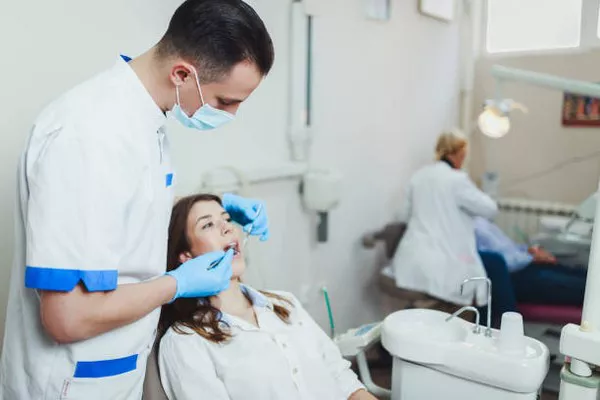Acknowledge and Explain the Phenomenon
Yellowing at the gum line is a common dental concern that can affect individuals of all ages. This visible discoloration may appear as a noticeable yellow band along the junction where the teeth meet the gums. While it can be distressing, it’s important to understand that yellowing at the gum line typically has underlying causes that can be effectively addressed with the right approach and professional guidance.
Provide a Clear Explanation of Potential Causes
Poor Oral Hygiene: Inadequate brushing and flossing, particularly near the gum line, can lead to the accumulation of plaque. Over time, plaque hardens into tartar, which not only causes gum inflammation (gingivitis) but also attracts stains from foods and beverages. This can result in yellowing of the teeth, especially at the gum line.
Gum Recession: When gums recede, the roots of the teeth become exposed. Unlike enamel, which is white, tooth roots are covered in a substance called cementum, which is naturally yellowish. This exposure makes the teeth appear yellow at the gum line, as the darker cementum is more visible than the enamel.
Tooth Decay: Decay near the gum line can cause discoloration due to the breakdown of enamel and the exposure of the underlying dentin, which is naturally yellowish. This can result in yellow spots or bands on the affected teeth.
Smoking and Tobacco Use: Nicotine and tar from smoking can deeply stain teeth, particularly at the gum line where these substances are frequently deposited. This staining can be stubborn and resistant to regular brushing and whitening treatments.
Certain Foods and Drinks: Foods and beverages like coffee, tea, red wine, and dark-colored fruits contain chromogens, compounds that can adhere to tooth enamel and cause staining. These stains may be more prominent at the gum line due to prolonged exposure to these substances.
See Also: What Are Cavities Filled With
Provide Practical Solutions and Preventive Measures
Improved Oral Hygiene: Brushing at least twice a day and flossing daily are essential for removing plaque and preventing yellowing at the gum line. Using a toothbrush with soft bristles and brushing gently along the gum line can help prevent gum recession and enamel wear.
Gum Care: Regular dental visits for professional cleanings are crucial for maintaining healthy gums and preventing gum disease. Dentists can remove tartar buildup that contributes to staining and recommend specialized oral hygiene techniques.
Professional Whitening: Professional teeth whitening treatments can effectively lighten teeth affected by yellowing at the gum line. These treatments use bleaching agents to break down stains and brighten tooth enamel. However, it’s important to note that whitening may not address underlying issues such as gum recession or enamel erosion.
Gum Grafting: For individuals with significant gum recession contributing to yellowing at the gum line, gum grafting procedures may be recommended. This involves taking tissue from another part of the mouth and attaching it to the receding gums to cover exposed roots and protect them from further damage.
Dietary Modifications: Limiting consumption of staining foods and drinks can help prevent new stains from forming and reduce the severity of existing stains. Drinking water or rinsing the mouth with water after consuming staining substances can also minimize their impact on tooth color.
Quitting Tobacco: Quitting smoking or tobacco use is beneficial not only for overall health but also for dental health. It can significantly reduce the risk of tooth staining and improve the effectiveness of oral hygiene efforts.
Highlight the Importance of Professional Evaluation
Consulting a dentist is crucial for accurately diagnosing the underlying cause of yellowing at the gum line and recommending appropriate treatments. A dentist can perform a comprehensive examination, including dental X-rays if necessary, to assess the extent of gum recession, tooth decay, or other contributing factors.
Conclusion
Understanding why teeth may appear yellow at the gum line involves recognizing the various contributing factors, from poor oral hygiene to lifestyle habits like smoking and dietary choices. By implementing effective oral hygiene practices, seeking professional dental care, and making necessary lifestyle changes, individuals can effectively manage and prevent yellowing at the gum line. Remember, consulting with a dentist is key to receiving personalized advice and achieving a healthier, brighter smile.
We encourage readers to share their experiences with dental discoloration and ask any questions they may have about maintaining oral health. Your feedback and inquiries help us provide valuable insights and guidance to our community.
You Might Be Interested In






























